color count
Color count is the amount of colors on a 'buck coat, each 'buck must have an accurate color count & a palette is preferred to be visible on refs of your 'bucks. Color count is necassary to this species because its an important factor in our genos system, aka the ability for most 'bucks to breed and create offspring.
What counts towards color count and not?
Color count is made up of the 'bucks coat colors, therefore not everything on a 'buck counts toward its color count.
What does NOT count towards color count is (please note not every 'buck has these traits as some of these just apply to specific 'bucks, but this is a general rule of thumb):
Horns
Hooves
Nose
Inner Ears
Paw Pads
Claws
Scaling
Primal Core
Primal Whiskers
Flames
Accessories
Desmo Membranes
Gems
False Pelts
_________________________________________________________
GRADIENTS
How to properly count a gradient
Gradients consist of at least 2 colors, the point at which the colors meet does NOT count towards the color count.

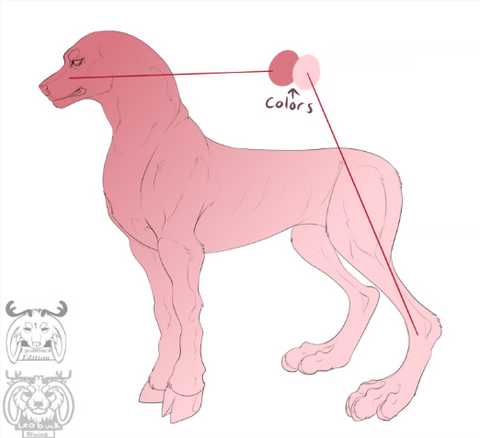

Caution must be taken when making gradients, as blending too much can create different colors than the intended palette.
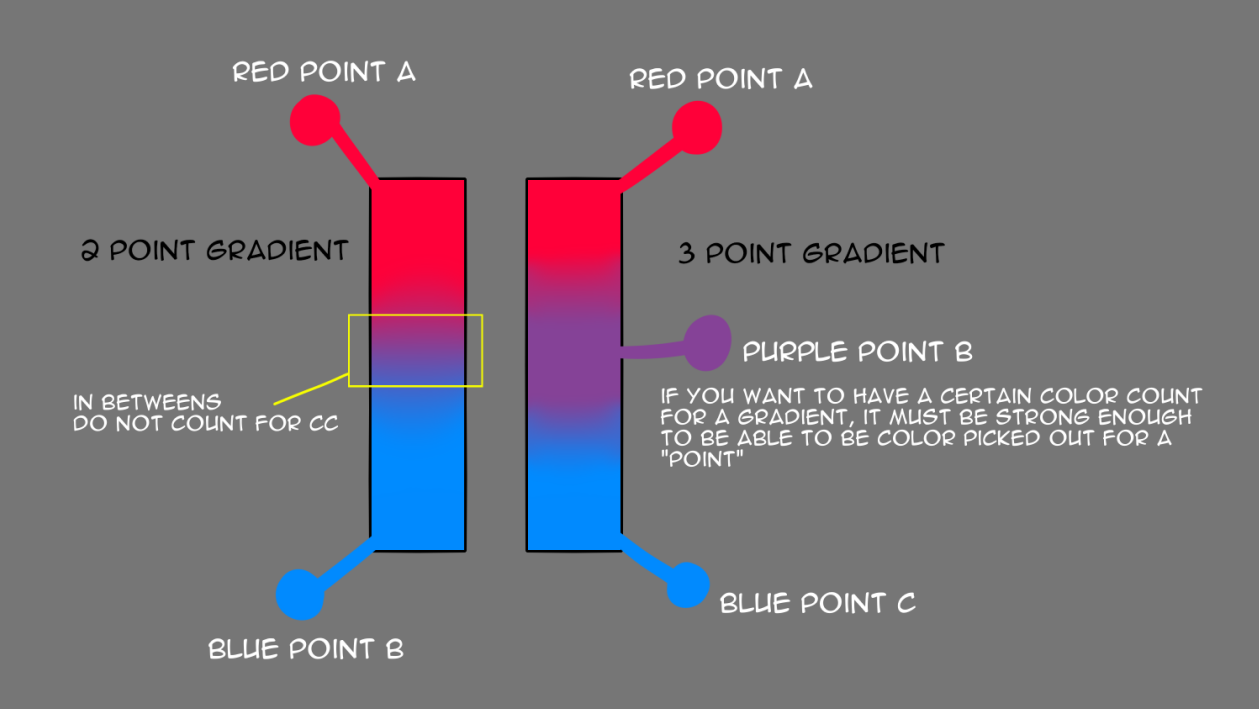
how a color counts for a "point" is that the color is strong enough to be able to be color picked out immediately. If you are wanting to have a certain color count for a gradient, it must be strong enough to be able to be color picked. The little "inbetween" blendings do not count towards a point/the cc.
Gradients should not be obstructed by markings like in the image below
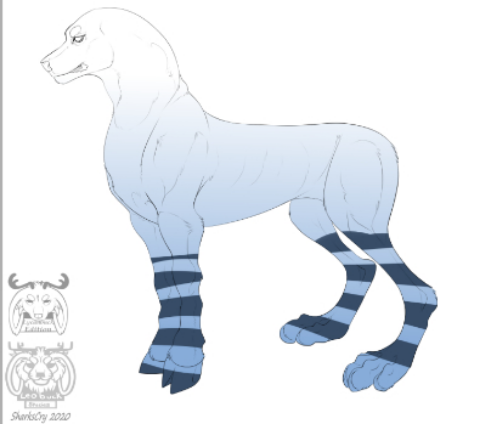
when a gradient is obstructed it creates a new color, cutting off from the original color point.
Note: If you're working with a MYO and not a Genos, you may obstruct a gradient, just note that it will change the CC as now you have created a new color.
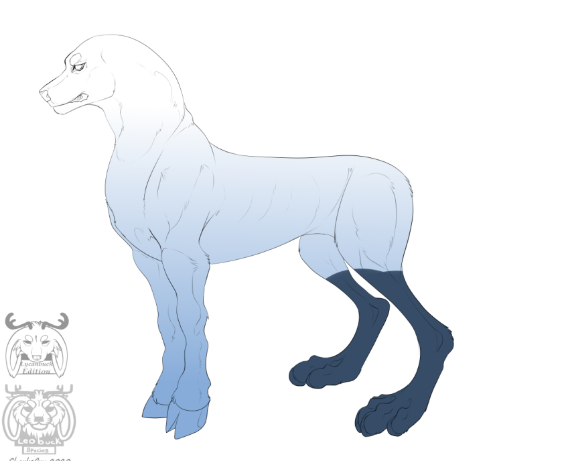
Here is an example of a gradient that has markings on it but the two initial points of color are unobstructed, which is why it is acceptable.
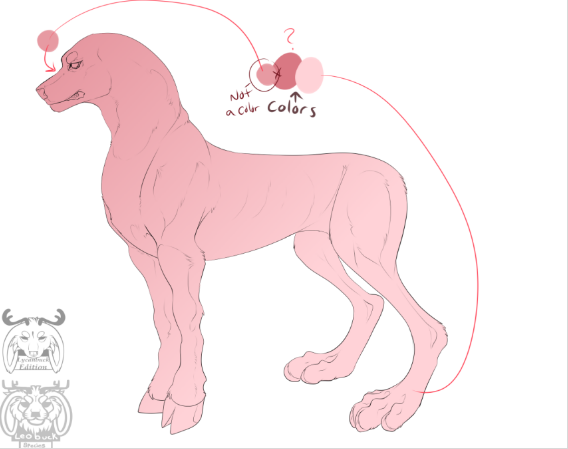
here is an example of too much blending, as it creates a middle pink color that was not originally apart of the two original colors. the darker pink gets blended too much and doesn't create a visible point, but rather a different color entirely.

here is another example of markings that will not work if you are only intending to use 2 colors. Here in this example there are actually thre, as the light blue underneath the solid marking creates a whole new color. For a gradient, you must be able to see the 2 points and the fade.
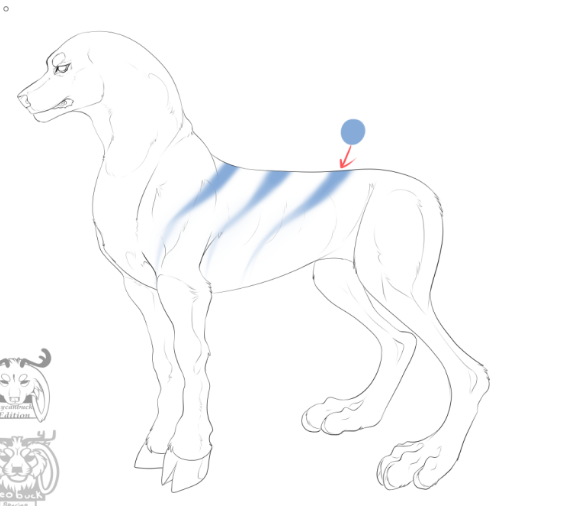
Here is an acceptable example of the marking above, as you can see the two points of the white and blue color and though the marking is soft you can still see the fade of the blue point into the white towards the stomach and chest.
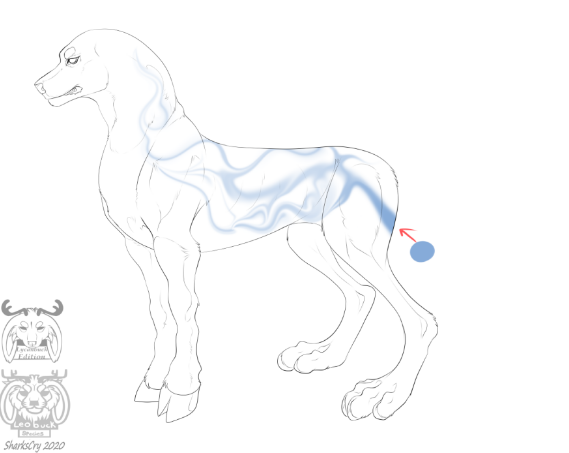
Here is another acceptable example of a soft gradient marking, the visible point of the darker blue is actually visible and you can see as it fades unobstructed across the body into the white base color.